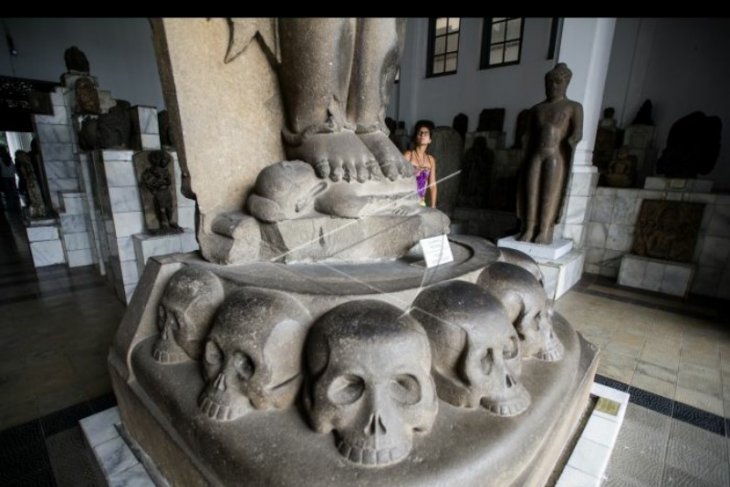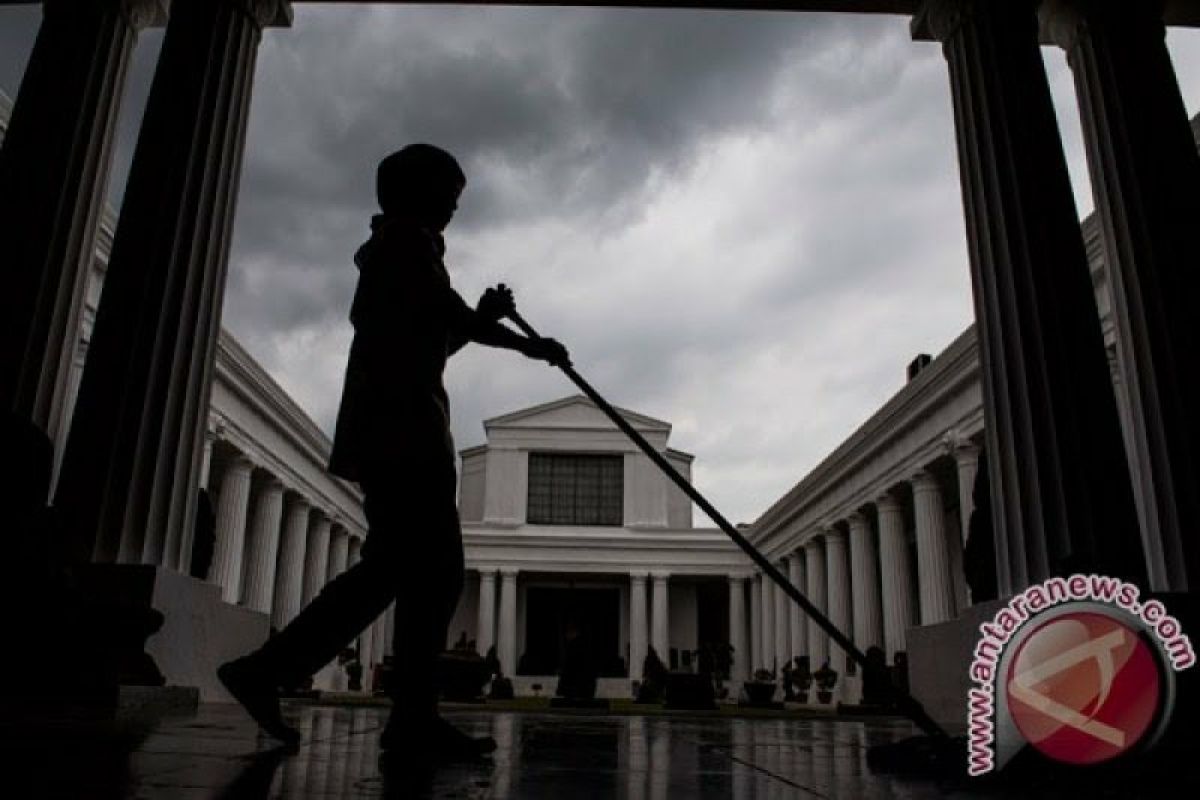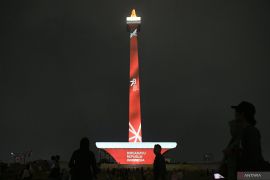The vast collection begins around an open courtyard of the 1862 building, which is stacked with magnificent millennia-old statuary, including a colossal 4.5m stone image of a Bhairawa king from Rambahan in Sumatra, who is depicted trampling on humanJakarta (ANTARA) - Life in Jakarta, Indonesia’s capital city, never really seems to cease, with the wheels of the economy always moving and activities of its citizens abuzz, right from morning until late at night.
Jakarta, home to 10.6 million people belonging to diverse ethnic backgrounds from across Indonesia, never sleeps, an expression often cited by scores of people in pursuit of fortune.
During the day, the number increases, with commuters who head to their offices in the city and flock out again in the evening.
At sunset, some residents are busy searching for a place to have dinner to gather with colleagues and family at cafes and restaurants. As midnight approaches, some people choose to gather at nightclub entertainment venues or spend time at a roadside coffee shop.
Work routines and entertainment for urban communities become an inseparable package. Moreover, various corners of Jakarta provide a plethora of entertainment, one of them being visiting museums in this sprawling metropolis.
Speaking of museums, Jakarta, in fact, has a variety of museums that are worth visiting. ANTARA has chosen two spots, the National Museum and Old Town area, that offer cultural richness of the past.
The National Museum is the best of its kind in Indonesia and a must-visit place.
The vast collection begins around an open courtyard of the 1862 building, which is stacked with magnificent millennia-old statuary, including a colossal 4.5m stone image of a Bhairawa king from Rambahan in Sumatra, who is depicted trampling on human skulls.
Collections in this building are ancient statues, inscriptions, other ancient objects, and handicraft items. These objects are a collection of various archaeological discoveries that exist in several places in the country, Madjid, a staff of the National Museum, stated.
Until now, 141,899 collections are managed, comprising seven types of collections: prehistoric, archeological, ceramics, numismatic-heraldic, history, ethnography, and geography.
"The rescue and preservation of this culture is essentially aimed at the interests of the public, informed through exhibitions and catalogs, brochures, audio visuals, as well as websites. The goal is that the public knows and participates in the preservation of the nation's cultural heritage," he stated.
The exhibition system in the old building (Gedung Gajah) is based on the types of collections of science, materials, and regionalism, such as the Prehistoric Exhibition Room, Bronze Room, Textile Room, and Ethnographic Room of Sumatra region.
Arrangement of the exhibition in the new building (Gedung Arca) is no longer based on the type of collection but rather leads to themes based on cultural aspects in which humans are positioned as actors in the environment.
The exhibition is themed "Cultural Diversity in Unity" that comprises several sub-themes, including Human and Environment, Technology, Social Organization and Ceramic Gold.
Collection and opening hours
Museum Gajah houses a collection of varied ancient objects from across the archipelago comprising ancient statues, inscriptions, other ancient objects, and handicraft items. The collections are categorized into ethnography, bronze, prehistory, ceramics, textiles, numismatics, historical relics, and valuable objects.
The oldest collection of Buddha statues at the Museum is a bronze Dipangkara Buddha statue kept in a bronze chamber in a separate glass case.
The museum showcases various Indonesian archeological relics. Dozens and even hundreds of statues of various sizes can be found in Gedung Gajah.
These statues are a collection of various archaeological discoveries in several places in the country. Not only the statues but also some of the fossils discovered in the Trinil river valley are stored in this museum.

Moreover, a ceramic collection made of bronze from the Han, Tang, and Ming dynasties, which is still intact, is also displayed there.
The museum, located 100 meters west of the National Monument, is open to visitors from 8:30 to 14:30 local time on Tuesday, Wednesday, Thursday, and Sunday, while it operates from 8:30 to 11:30 on Fridays and from 8:30 to 13:30 local time on Saturdays.
Meanwhile, the museum, better known as Museum Gajah, is closed to the public every Monday and on national and religious holidays. The entry fee is around Rp2000-Rp5000.
Visitors can spend some of their holidays increasing their knowledge at the most complete museum in Indonesia.
Old Town
Navigating the Old City of Jakarta feels like a trip to the colonial city in the majestic past.
The buildings built during the Dutch colonial era since the 1600s still appear sturdy, neat, and artistic.
Several locations that can be visited in the Jakarta Old Town area include the Sunda Kelapa Harbor and Jakarta Kota Station.
Visitors can also visit several museums containing historical collections in the Old City area of Jakarta, such as the Fatahillah Museum, the Fine Arts and Ceramics Museum, the Bank Indonesia Museum, and the Maritime Museum.
The Old City of Jakarta began to be built around 1620 by the VOC during the leadership of Jan Pieterszoon Coen, the head of the Kota Tua Zone Management Unit (UPK Kota Tua), Norviadi Setio Husodo, remarked.
Jakarta, formerly known as Batavia, was rebuilt after being destroyed by the attack of Prince Jayakarta from Demak Kingdom.
The city of Batavia was designed in a European style separated by a canal with several blocks around the canal, Setio remarked.
The City of Batavia was completed in 1650 and functioned as the VOC headquarters in the East Indies.
The Old City of Jakarta during the VOC and the Netherlands was an important center of government as well as trade. Trade was centered at the Sunda Kelapa Harbor that still serves as a port for traditional ships.
The existence of this port has become an important milestone for the city of Jakarta. From this place, the beginning of the city of Jakarta is widely known to the world, Setio pointed out.
Foreign traders, such as Arabs, Persians, and Indians, trade through the Sunda Kelapa Harbor.
In 1972, Governor of Jakarta, Ali Sadikin, issued an official decision to make the Jakarta Old Town area a historical heritage site to protect the architectural history and the remained buildings.
Traveling to Sunda Kelapa Harbor while seeing trading activities with traditional ships is certainly interesting.
Visitors can explore the economy of Batavia in the past.
The activity is still active as a crossing for traditional ships carrying a variety of basic necessities between islands in Indonesia.
The distinctive traditional boat shape with a wide screen, commonly called phinisi ship, looks appealing to store as part of a memoir collection or background photo.
The location was earlier a place where photographers hunted for interesting photos or the bride and groom took pre-wedding photoshoots.
Despite the Old City of Jakarta always reeling from traffic problems, it had not dampened the spirit of visitors coming to this place.
Various means of transportation still operate in this region.
Bajaj, or three-wheelers, and bicycle taxis are ready to take tourists around the Old City.

Several bikes are available on rent for visitors.
Uniquely, bicycles in the Old City of Jakarta are maintained like an old bicycle, or people used to call it an Onthel bike.
At a cost of Rp35000, bicycle riders are ready to take a tour around the Old City of Jakarta.
However, exploring museums in the dynamic city is a wonderful way to learn and appreciate the nation’s wealth of history and culture.
Related news: Tranquility in the hustle and bustle of Jakarta
Related news: Jakarta's nightlife: Speakeasy bars in southern district
Related news: Bouncy, icy, sweaty: Guide to Jakarta's amusement spots
Related news: ANTARA guide to mangrove resort in North Jakarta
Editor: Gusti Nur Cahya Aryani
Copyright © ANTARA 2019












